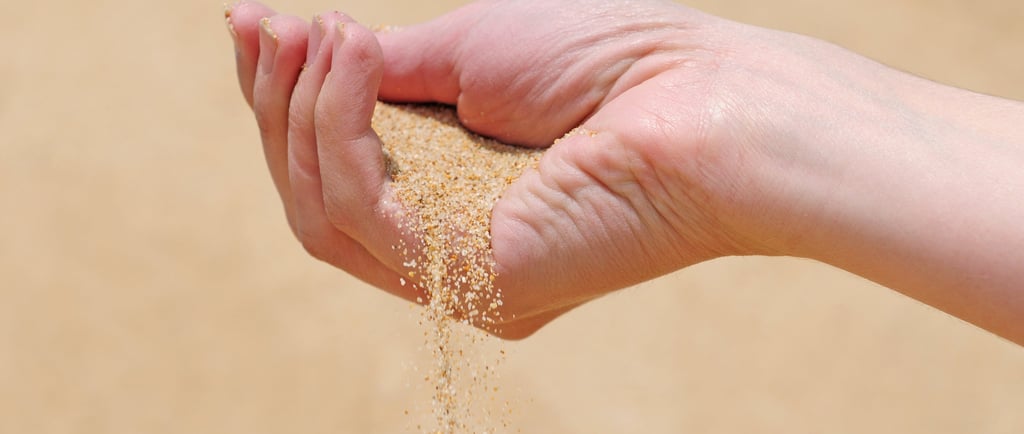Why Flushing Your Water Heater Annually Is Critical in Utah’s Hard Water Areas
WATER HEATERSWASATCH FRONT PLUMBINGRESIDENTIAL PLUMBINGPREVENTIVE PLUMBING TIPS
10/22/20254 min read


Utah’s hard water doesn’t politely “build up.” It colonizes. It marches into your water heater with full pioneer energy and starts homesteading. Within months, it’s laying down white, crusty layers of calcium and magnesium like geological strata in miniature. By the time you realize it, your heater’s basically the Grand Canyon in a tank.
Let’s be clear: this isn’t one of those “maybe someday” chores like cleaning your baseboards or organizing your junk drawer. Flushing your water heater in Utah is survival. Skip it long enough, and that thing will start rattling like a bag of marbles in a paint mixer.
🧂 Utah Water: The Mineral Smoothie You Didn’t Ask For
If you live anywhere from West Valley to Draper—or up in Layton, Lehi, or down toward Herriman—you’re basically living on the carbonate belt of the Rockies. The water here is loaded with dissolved calcium and magnesium. In other words, your tap water is a rock milkshake.
When that “milkshake” hits 120–140°F inside your water heater, those minerals don’t stay dissolved. They drop out of the water like confetti at a bad parade and settle on the bottom of the tank. Day after day, it piles up—grain by grain—until your heater’s sitting on a crunchy bed of Utah limestone.
Then the real chaos starts.
🔥 The Tank’s Secret Life as a Volcano
Inside that tank, the burner fires up underneath the new mineral floor you didn’t ask for. The heat can’t get through cleanly anymore, so it superheats tiny pockets of water trapped under the sediment.
Pop.
Crackle.
Bang.
That’s not your pipes. That’s your heater boiling its own guts. Each little explosion rattles the tank walls, loosens joints, and makes your water heater sound like it’s auditioning for a drumline. Those micro-bursts also cook the sediment into a solid slab, like kiln-fired pottery fused to the steel bottom.
At that point, flushing gets tricky. You can drain the water all day long, but those minerals are baked in tighter than lasagna layers. And unlike lasagna, nobody’s fighting for a second serving.
⚙️ Why Flushing Is the Only Reset Button
A yearly flush is the closest thing to time travel your water heater will ever get. You’re sending gallons of clean water roaring through the bottom drain valve, breaking up the mineral colonies, and blasting them out before they harden into permanent geology.
When done right, you:
Drop your energy use. Heat transfers cleanly again—no sediment buffer zone.
Get hotter water faster. Efficiency returns, and your heater breathes easy.
Stop the noise. Bye-bye rumbling, crackling, and tank percussion solos.
Add years of life. Sediment’s gone, corrosion slows down, and your anode rod isn’t fighting a losing battle.
Flushing is basically giving your heater a detox spa day after a year of drinking mineral sludge.
🧭 Utah’s Timeline: Flush Early, Flush Often
If you’re in the Wasatch Front, you don’t get to play the “once every few years” game. Utah water hardness is off the charts. In places like Kearns, Magna, and West Jordan, you should flush every six to nine months.
That’s not paranoia—it’s math. Your heater’s heating 50+ gallons of rock soup multiple times a day. Without flushing, the sediment layer thickens fast, stealing both efficiency and capacity.
Tankless heaters aren’t immune, either. They just fail in a sneakier way. Instead of a crusty bottom, they clog their narrow passageways with scale until they start throwing error codes like a toddler throwing tantrums.
🚫 The “It’s Fine” Phase (Also Known as “The Beginning of the End”)
Let’s talk about what happens when you decide to “wait a little longer.”
First, your heater takes longer to warm up water. Then, your showers get shorter because sediment is quietly stealing tank volume. You’ll start hearing faint pops and rumbles—your heater’s version of muttered complaints.
A few months later, it’s full-on percussive symphony. Your water turns slightly cloudy, maybe rusty. Your gas bill creeps upward because your heater’s working twice as hard for half the output. And then one day, nothing but cold water comes out, and you’re Googling “replacement cost” with a sinking feeling.
Flushing is cheaper. So much cheaper.
🧰 Can You DIY This Without Burning Your Eyebrows Off?
Yes—if you’ve got patience, a garden hose, and the ability to follow instructions. But here’s the catch: Utah sediment doesn’t behave like mild mineral dust. It’s chunky, gritty, and sometimes cement-grade. If the drain valve clogs or the flow slows to a trickle, you’ll need pro tools to break up the blockage.
That’s why a professional flush in Utah isn’t overkill. It’s insurance. Pros can also check your anode rod, that hidden metal hero inside the tank that sacrifices itself to prevent rust. If it’s gone, no flush on earth will save your tank from internal corrosion.
🌋 The Sounds of Doom (and What They Mean)
If your heater sounds like popcorn, it’s not cute. That popping is boiling sediment. If it sounds like thunder, the layer’s thicker than you think. If you hear hissing or sizzling, you might have localized overheating that’s cooking the tank lining.
Translation: don’t wait for “next month.” Flush it now—or call someone who can.
🚿 The Glorious Aftermath
Once you’ve flushed out that gritty Utah cocktail, your water heater suddenly runs quiet. The water comes out hotter, faster, longer. The gas or electric element breathes easy again. And best of all, you’ve bought yourself literal years of extra service life.
It’s one of the rare maintenance chores where you can hear the difference. No more percussive pops. No grumbles. Just smooth, satisfying silence and hot water on demand.
🏁 The Final Word
Utah’s water hardness is a geological fact—you can’t fight it with wishful thinking. But you can fight what it does to your water heater. Flushing once a year (or twice, if you’re west of Salt Lake) keeps that tank alive and your showers steamy.
Because in Utah, your water heater isn’t just heating water—it’s waging a daily war against the minerals of the earth. Give it backup. Give it a flush.
Contact
Main Office
Social
3560 S 2200 W
West Valley City, UT 84119
P.O. Box 25123
Salt Lake City, UT 84125
Monday – Friday:
7:00 am – 3:30 pm
Billing & Mailing Address
Hours
© Budd M. Rich Plumbing Company, DBA BRPI Mechanical. All rights reserved.
